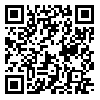Volume 13, Issue 2 (2025)
Health Educ Health Promot 2025, 13(2): 1001-1009 |
Back to browse issues page
Download citation:
BibTeX | RIS | EndNote | Medlars | ProCite | Reference Manager | RefWorks
Send citation to:



BibTeX | RIS | EndNote | Medlars | ProCite | Reference Manager | RefWorks
Send citation to:
Paghe A, Daeechini A H, Valizadeh Laktarashi H, Naseri Z, Bornasi E, Sharafi S. Designing the Critical Informational Components of a Smartphone Application for Self‐Management of Gestational Diabetes. Health Educ Health Promot 2025; 13 (2) :1001-1009
URL: http://hehp.modares.ac.ir/article-5-81030-en.html
URL: http://hehp.modares.ac.ir/article-5-81030-en.html
Atefeh Paghe1, Amir Hossein Daeechini2, Hossein Valizadeh Laktarashi3, Zeynab Naseri4, Elnaz Bornasi5, Sadegh Sharafi *6
1- Department of Health Information Technology and Management, School of Allied Medical Sciences, Shahid Beheshti University of Medical Sciences, Tehran, Iran. Email: atefeh.pagheh97@gmail.com ORCID ID: 0009-0001-5873-1856
2- Department of Health Information Technology and Management, School of Allied Medical Sciences, Shahid Beheshti University of Medical Sciences, Tehran, Iran. Email: ah-daeechini@razi.tums.ac.ir ORCID ID: 0009-0009-2208-953X.CO first Author.
3- Department of Health Information Management, School of Health Management and Information Sciences, Iran University of Medical Sciences, Tehran, Iran. Email:valizadehlaktarashi.h@iums.ac.ir ORCID ID: 0000-0002-9066-9597
4- Department of Health Information Technology, School of Allied Medical Sciences, Ahvaz Jundishapur University of Medical Sciences, Ahvaz, Iran.Email:naseri.z@ajums.ac.ir ORCID ID: 0000-0002-0713-4912
5- Department of Health Information Technology, School of Allied Medical Sciences, Lorestan University of Medical Sciences, Khorramabad, Iran.Email:elnaz.bornasi@yahoo.com ORCID ID: 0009-0002-3399-7903
6- Department of Health Information Technology, School of Allied Medical Sciences, Abadan University of Medical Sciences, Abadan, Iran.Email:sadeghsharafi1995@gmail.com ORCID ID: 0000-0002-9549-2305 Phone number: +98-9350857405 ,sadeghsharafi1995@gmail.com
2- Department of Health Information Technology and Management, School of Allied Medical Sciences, Shahid Beheshti University of Medical Sciences, Tehran, Iran. Email: ah-daeechini@razi.tums.ac.ir ORCID ID: 0009-0009-2208-953X.CO first Author.
3- Department of Health Information Management, School of Health Management and Information Sciences, Iran University of Medical Sciences, Tehran, Iran. Email:valizadehlaktarashi.h@iums.ac.ir ORCID ID: 0000-0002-9066-9597
4- Department of Health Information Technology, School of Allied Medical Sciences, Ahvaz Jundishapur University of Medical Sciences, Ahvaz, Iran.Email:naseri.z@ajums.ac.ir ORCID ID: 0000-0002-0713-4912
5- Department of Health Information Technology, School of Allied Medical Sciences, Lorestan University of Medical Sciences, Khorramabad, Iran.Email:elnaz.bornasi@yahoo.com ORCID ID: 0009-0002-3399-7903
6- Department of Health Information Technology, School of Allied Medical Sciences, Abadan University of Medical Sciences, Abadan, Iran.Email:sadeghsharafi1995@gmail.com ORCID ID: 0000-0002-9549-2305 Phone number: +98-9350857405 ,
Abstract: (191 Views)
Abstract
Aims: Prevention and management of GDM and its adverse maternal and neonatal outcomes are critical for health promotion. Mobile health interventions have the potential to support effective self-management in this population. This study aims to identify and analyze the critical informational components and functional capabilities required for developing a mobile self-management application tailored for women with gestational diabetes, based on expert perspectives.
Methods: This applied study was conducted in 2025 through four sequential phases. The present research represents the first phase of a four-stage cycle for developing a mobile app for self-management of gestational diabetes, including needs assessment, design, implementation, and evaluation. A comprehensive review of scientific literature and clinical guidelines from reputable databases was performed to extract critical components. Based on the study objectives, a researcher-designed questionnaire utilizing a Likert scale was developed and administered to a panel of 20 experts from the fields of obstetrics and gynecology, endocrinology and metabolism, medical informatics, and health information management. Data were analyzed using SPSS version 26.
Findings: Patient Profile, Educational Information, Medication, Self-management Recommendations, and Functional Capabilities constitute the most important information areas for developing a mobile self-management app for women with gestational diabetes.
Conclusion: Development of self-management applications for gestational diabetes should be grounded in targeted education, precise monitoring, and advanced functional capabilities to provide an effective and reliable tool for improving maternal health and preventing complications. The findings of this study can offer practical guidance for developers, healthcare professionals, and policymakers in the health sector.
Aims: Prevention and management of GDM and its adverse maternal and neonatal outcomes are critical for health promotion. Mobile health interventions have the potential to support effective self-management in this population. This study aims to identify and analyze the critical informational components and functional capabilities required for developing a mobile self-management application tailored for women with gestational diabetes, based on expert perspectives.
Methods: This applied study was conducted in 2025 through four sequential phases. The present research represents the first phase of a four-stage cycle for developing a mobile app for self-management of gestational diabetes, including needs assessment, design, implementation, and evaluation. A comprehensive review of scientific literature and clinical guidelines from reputable databases was performed to extract critical components. Based on the study objectives, a researcher-designed questionnaire utilizing a Likert scale was developed and administered to a panel of 20 experts from the fields of obstetrics and gynecology, endocrinology and metabolism, medical informatics, and health information management. Data were analyzed using SPSS version 26.
Findings: Patient Profile, Educational Information, Medication, Self-management Recommendations, and Functional Capabilities constitute the most important information areas for developing a mobile self-management app for women with gestational diabetes.
Conclusion: Development of self-management applications for gestational diabetes should be grounded in targeted education, precise monitoring, and advanced functional capabilities to provide an effective and reliable tool for improving maternal health and preventing complications. The findings of this study can offer practical guidance for developers, healthcare professionals, and policymakers in the health sector.
Keywords: Gestational Diabetes Mellitus, Self-Management, Mobile Health, Mobile Application, Needs Assessment
Article Type: Original Research |
Subject:
Technology of Health Education
Received: 2025/05/23 | Accepted: 2025/06/24
Received: 2025/05/23 | Accepted: 2025/06/24
Send email to the article author
| Rights and permissions | |
 |
This work is licensed under a Creative Commons Attribution-NonCommercial 4.0 International License. |





